On Thursday I went hunting for mushrooms in the pine forests about ten kilometers north of my house. (I live at the base of Mt. Diancang, or Cangshan 苍山). The group included my sister, who was visiting, her friend J, and our guide Mr. Lu, who turned out to be my neighbor.
Conditions were ideal after a recent rainy week in Dali: damp, cool, 8200 feet (3500 meters) above sea level, sparse with vegetation, thick pine needles underfoot. The birds were muted, the woods eerily quiet. The light was soft and the fog was white and dense, close to the tops of the trees.
By the time we arrived, the local aunties had been out for three or four hours, starting their hunt before daylight in order to find enough mushrooms to sell at the markets. We were latecomers at 8:30 am, the most visible treasures long gone. I was just hoping to glean what they’d missed.
Most of the woodlands in southwest Yunnan are relatively untouched and marvelously fecund for mushrooms. Pinus yunnanensis (Yunnan pine, 云南松), which accounts for 52% of the woodlands in the province, provides the perfect wild substrate for boletus species that pop-up literally overnight, but despite the prolific cache there are only so many mushrooms every day, and a lot more people wanting those mushrooms.
Some foragers, Mr. Lu told me, begin at midnight, using flashlights. But you don’t want to be in the mountains at night— there are wild animals, and venomous snakes like the pit viper, green tree viper and banded krait, and who knows what other critters that come out exclusively in the dark. But mushroom foraging is a source of livelihood for many families, who otherwise depend on subsistence farming, and most are willing to risk an earlier start.
Two aunties padded noiselessly by, bent under their conical hats. They carried baskets heaped with grubby jianshouqing and pin-like porcini. I felt like a child in a fairy tale, peering into these oversized sewing baskets with buttons of all shapes and sizes.
The auntie I talked to said she’d been foraging mushrooms for forty years. (We were trying to compete against forty years of experience. Might as well give up now.) Her eyes were sharper than mine. I watched as she crept low to the earth, pawing the pine litter in quick movements, digging out earth-colored caps that I had completely missed a few minutes ago. She was out here almost every day during the rainy season, from summer to early fall. “It’s hard to find any mushrooms in March to May, it’s too cold in Dali,” she said. “Sometimes I go west of the mountain.”
Our guide was originally from Jiangxi province. He moved to Yunnan during the pandemic, abandoning a tech job in Shenzhen, and hasn’t left. Now he forages and takes groups up Cangshan mountain for a living. “When growing up, I used to forage with my parents around our village in Jiangxi, but most of the wild mushrooms have disappeared,” he said. “The climate has gotten too warm, and many forests were cut to grow more lucrative crops like chengzi (mandarin oranges).”
“Look under the pine trees, and on the slopes,” he said. “Look where the moisture tends to collect. Move side to side, not up, to minimize fatigue.” We scanned the ground with our eyes fixed on the forest floor, with the sweeping zeal of a search party.
Soon I felt the strain in my ankles, the muscles burning in my thighs as we trudged higher up on the slopes. The air was cool on the back of my neck. Mr. Lu handed us each a small basket and a two-tined prong for clearing leaves and debris— a simple tool traditionally used to loosen soil for planting seeds. “We don’t use knives,” he said. He instructed us to pull whatever mushroom we found gently up by the roots.
Mr. Lu found a few baby jianshouqing that were sprouting up from their scattered spores. “These will be full-grown in about three days,” he said.
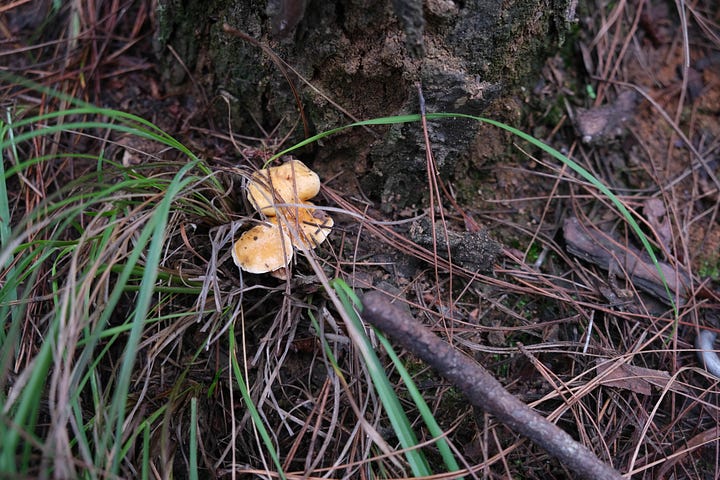
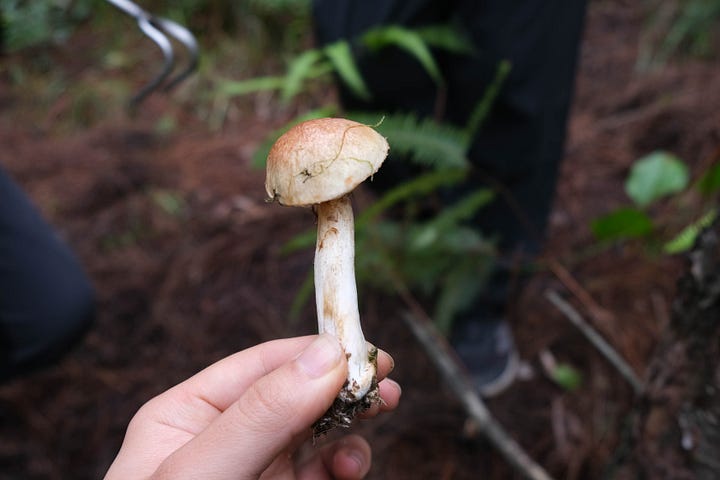
After an hour we still hadn’t found much that was edible, except for a handful of chanterelles, which the Chinese call chicken fat mushrooms (ji you jun, 鸡油菌), and weeping bolete (Suillus granulatus), which grows in a symbiotic relationship with pine. Mr. Lu called the latter sticky capped porcini (niangai niuganjun 粘盖牛肝菌) or slippery mushroom (hua xun 滑蕈), because “they cause diarrhea two hours after ingesting.”
He paused. “Time for a snack break?” he said. He’d brought some crackers and local fruits: green yangguang meigui grapes (shiny muscats), lychee, and crunchy mottled dates.
Finally, we hit gold. Mr. Lu spotted the first porcini, tucked into a dark bank beneath some pines. A few minutes later I found another, and another. My eyes had finally adjusted.
I used to hunt morels and ceps near Portland, and learned that with foraging there’s always the initial hump of fruitless searching, the necessary frustration— it’s as if the mountain is testing you out, making you pay your dues, like the cover charge to some exclusive club. And just as you think you may go down empty-handed (at least you got a hike in for Strava, right?), peer into one more clump of bushes. Stick it out. Because once you hit one, you’ll probably find more. It’s a matter of luck, but also a test of how closely you’re willing to look.
Apart from porcini, this particular grove was teeming with yellow-stemmed, mildly hallucinogenic jianshouqing 见手青 (Lanmaoa asiatica), which I first ate a few weeks ago.
Back home I sliced up the porcini and stir-fried them in a wok with soy sauce, garlic, and chiles. Each glistening piece was complex with umami, flooding my tastebuds with so much savoriness I literally had to close my eyes. They crunched like mushrooms but the flavor was familiar and rich, like something cooked in beef tallow or butter. But more interesting than meat, woodsy with a light, sweet bitterness. I don’t think I’ve eaten any mushroom that topped this one.
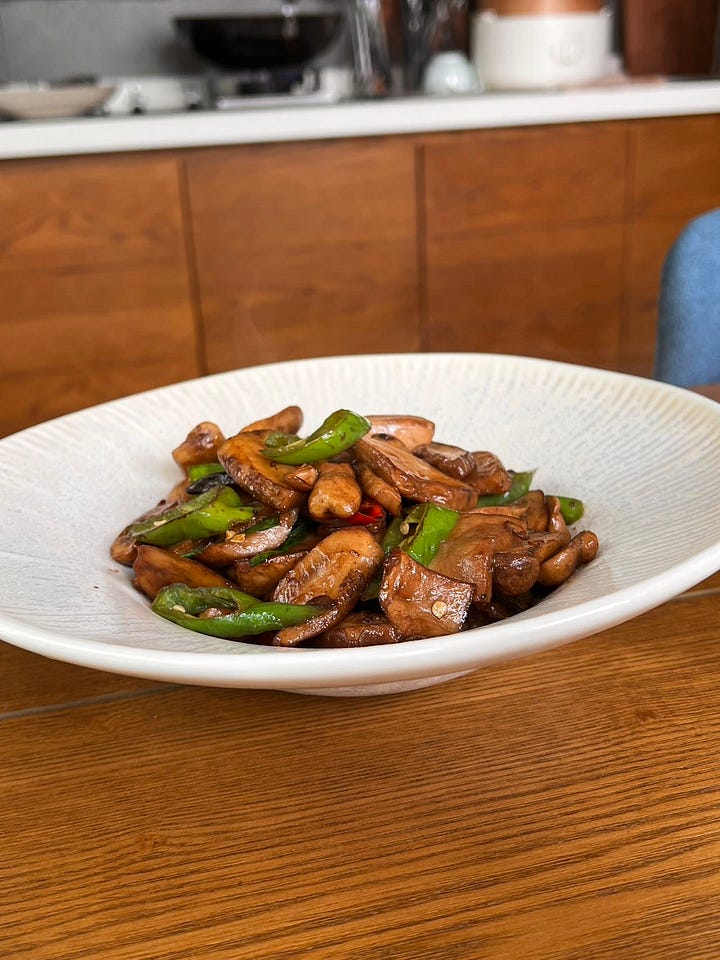
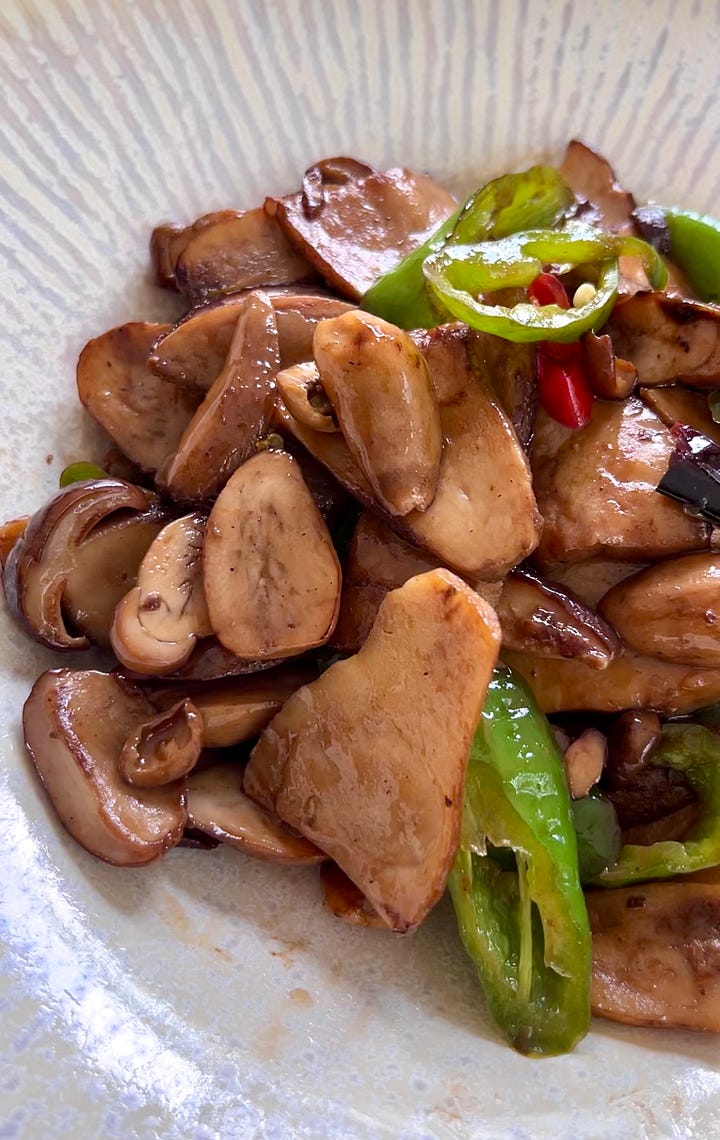
When fresh, wild porcinis can sell for 40-50 yuan a 斤 (about $7 dollars per pound), and jianshouqing are nearly double that, going for 70-80 yuan ($10-12 per pound). And the remainder? They’re dried and sold in bulk to sell in the off-season/winter, or fried slowly in oil and jarred as youjunzi, 油菌子, eaten as a topping on rice or cooked into stir-fries. That’s how you preserve a highly perishable mushroom that’s good for only a day or two.
In terms of nomenclature: I’ve been describing these mushrooms as porcinis, but unlike the European B. edulis, there are actually three divergent species of Chinese boletus found in Yunnan, more closely related to B. aereus. In 2013 they were newly classified as B. bainiugan, B. meiweiniuganjun and B. shiyong. Here’s their entry and description in the Index Fungorum, for those interested.
If the Latin names look familiar, it’s because they’re actually the Hanyu pinyin transcription of the Chinese nicknames, which I find hilarious. Bainiugan means “white porcini”, meiweiniuganjun means “delicious porcini,” and shiyong doesn’t even bother with consistency, it’s literally just “edible” (食用).
Chinese names are more descriptive than scientific. Morels are “sheep’s stomach mushroom” (羊肚菌), porcini are “beef liver mushrooms” (牛肝菌), chanterelles are "chicken oil mushrooms” (鸡油菌) and matsutake are “pine antlers” (松茸). In Yunnan, the locals call all types of porcini/boletus-looking mushrooms jianshouqing, which adds to the confusion. Here’s a chart which lists the type of boletus with flavor and texture ratings in Chinese.





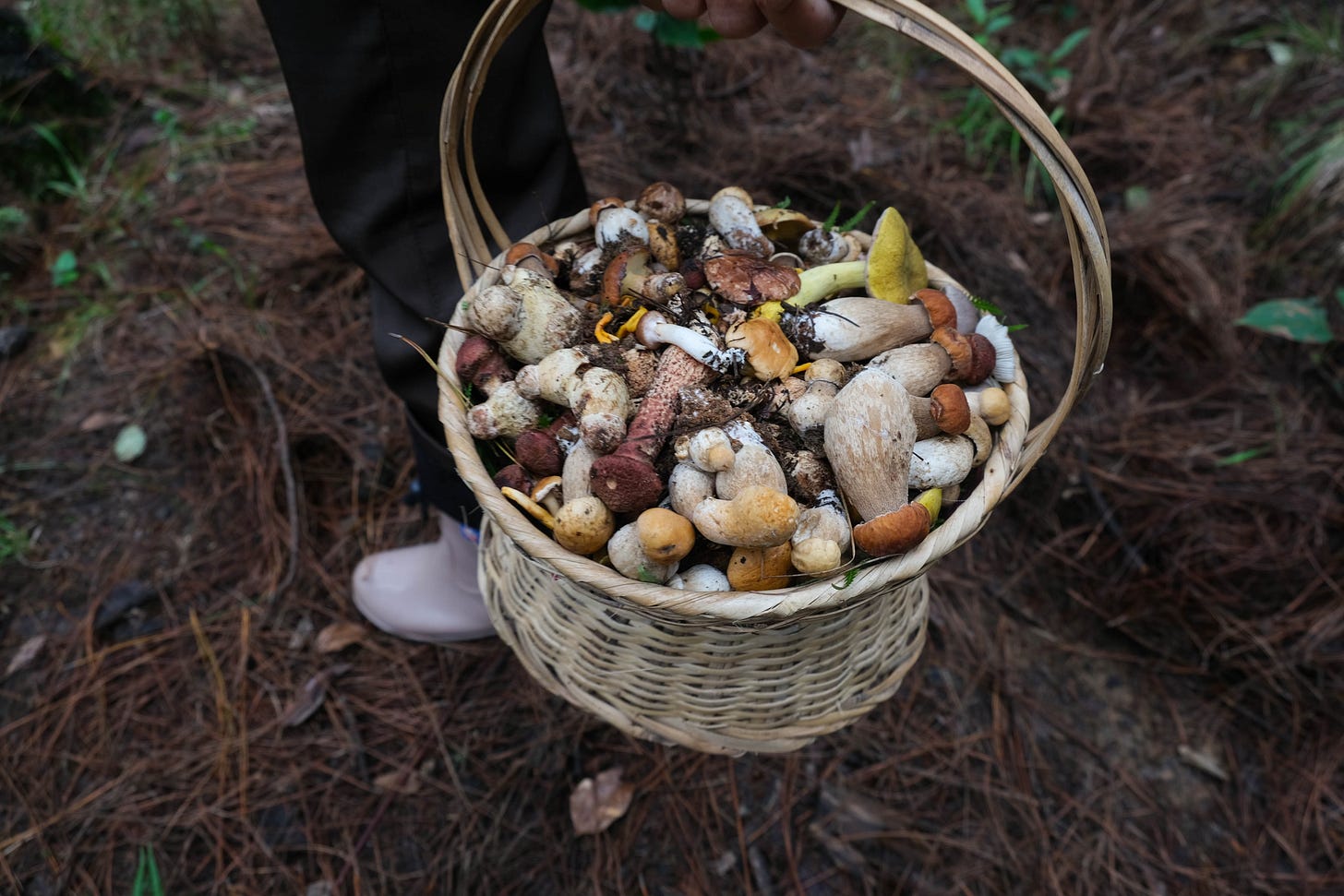


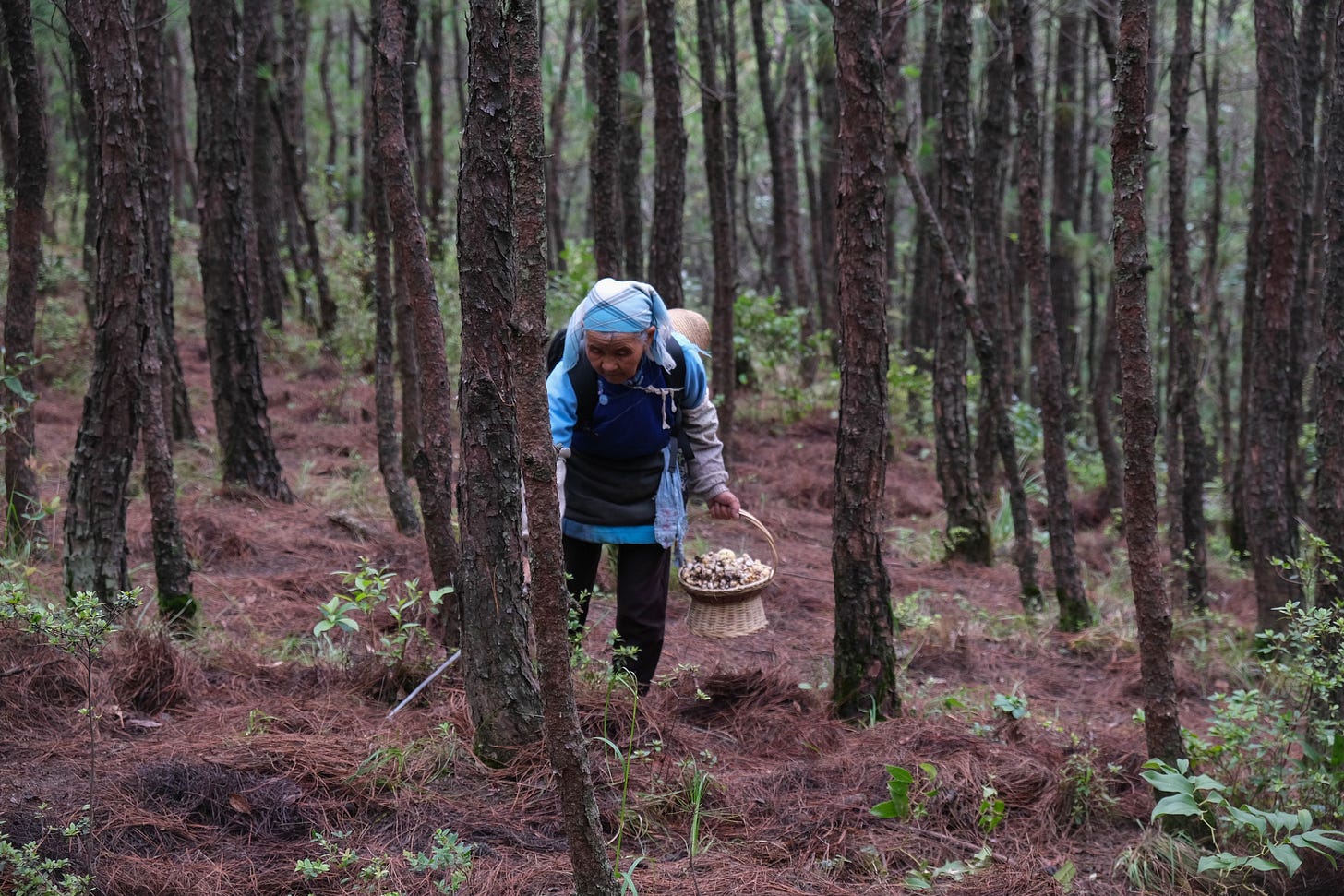

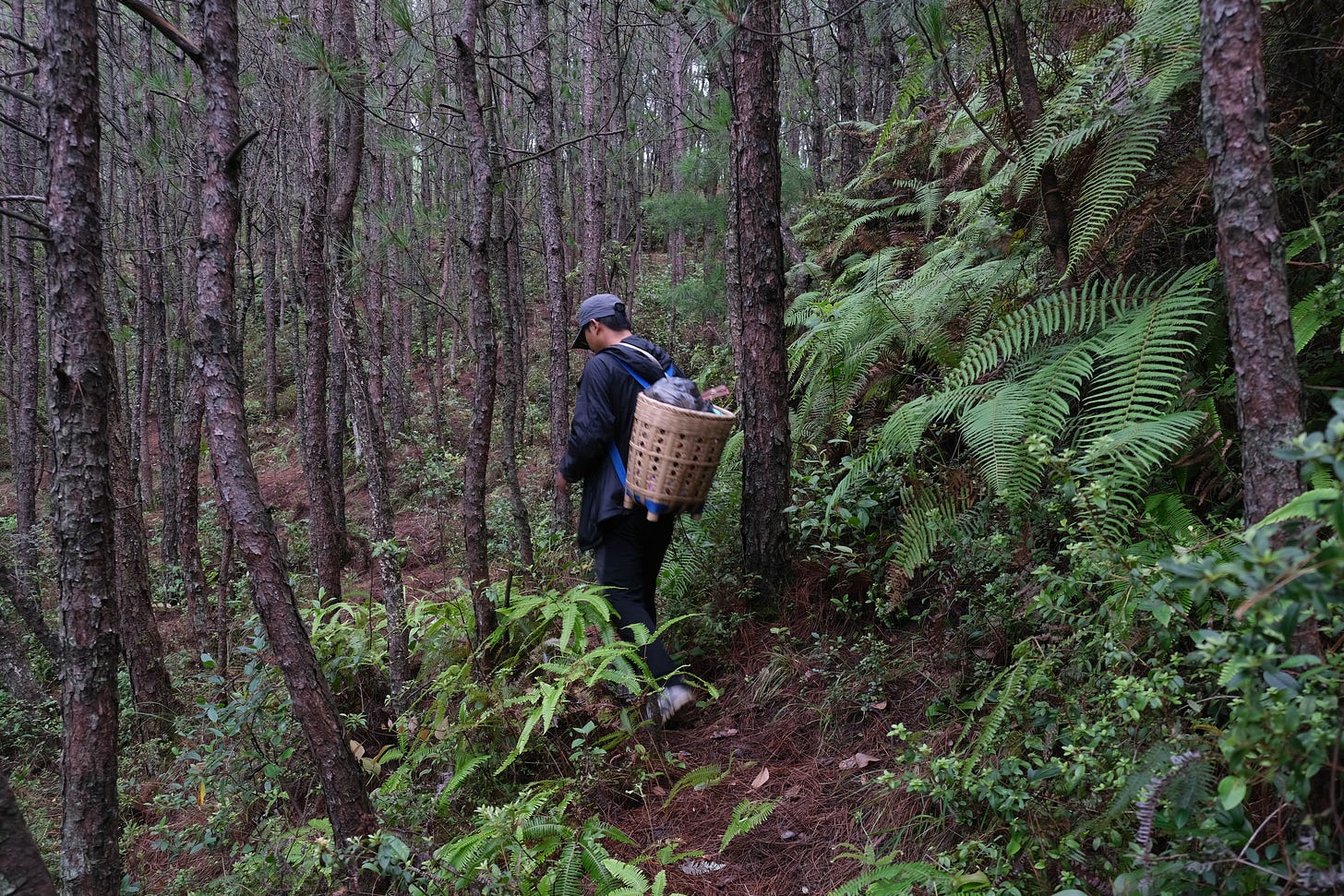
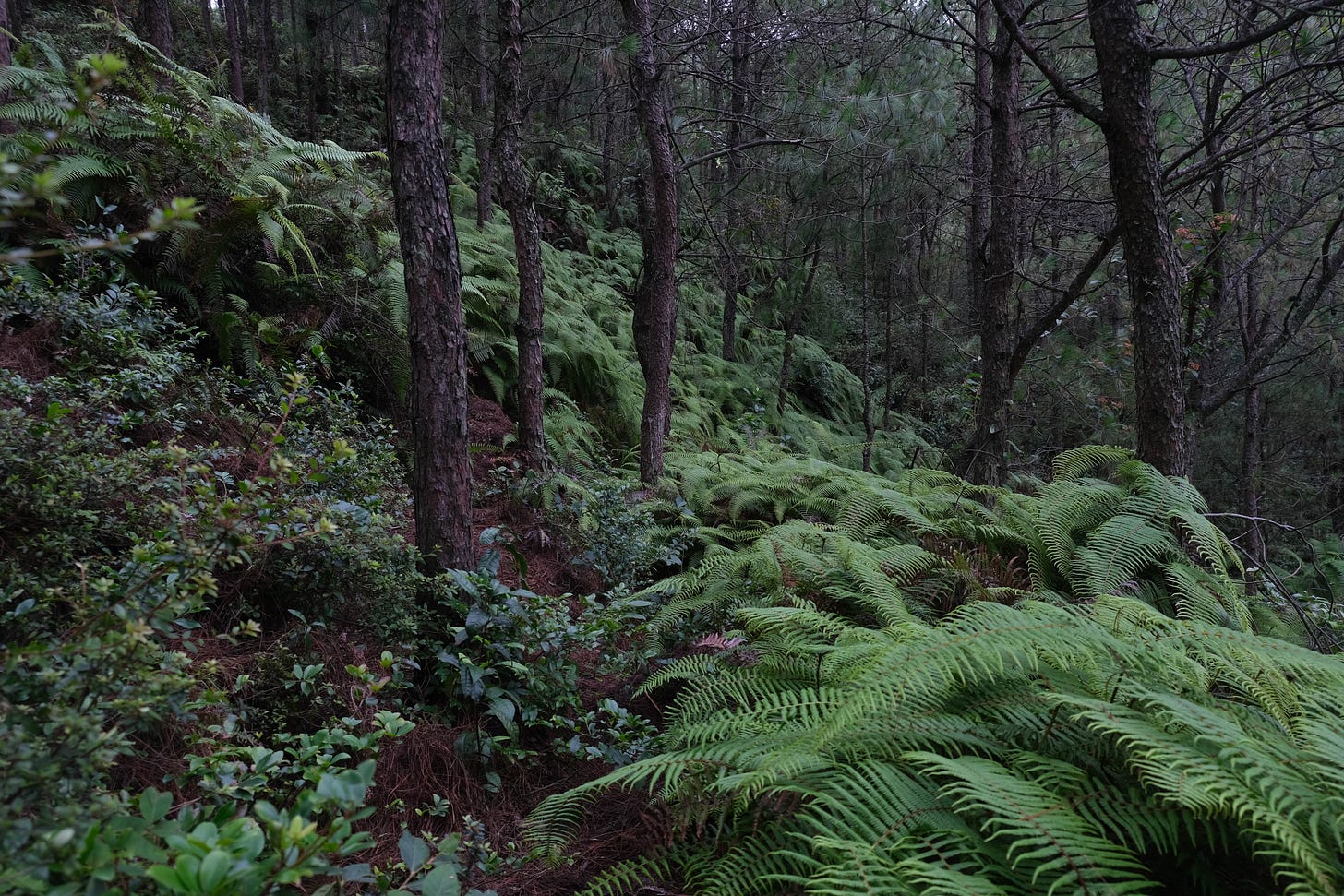
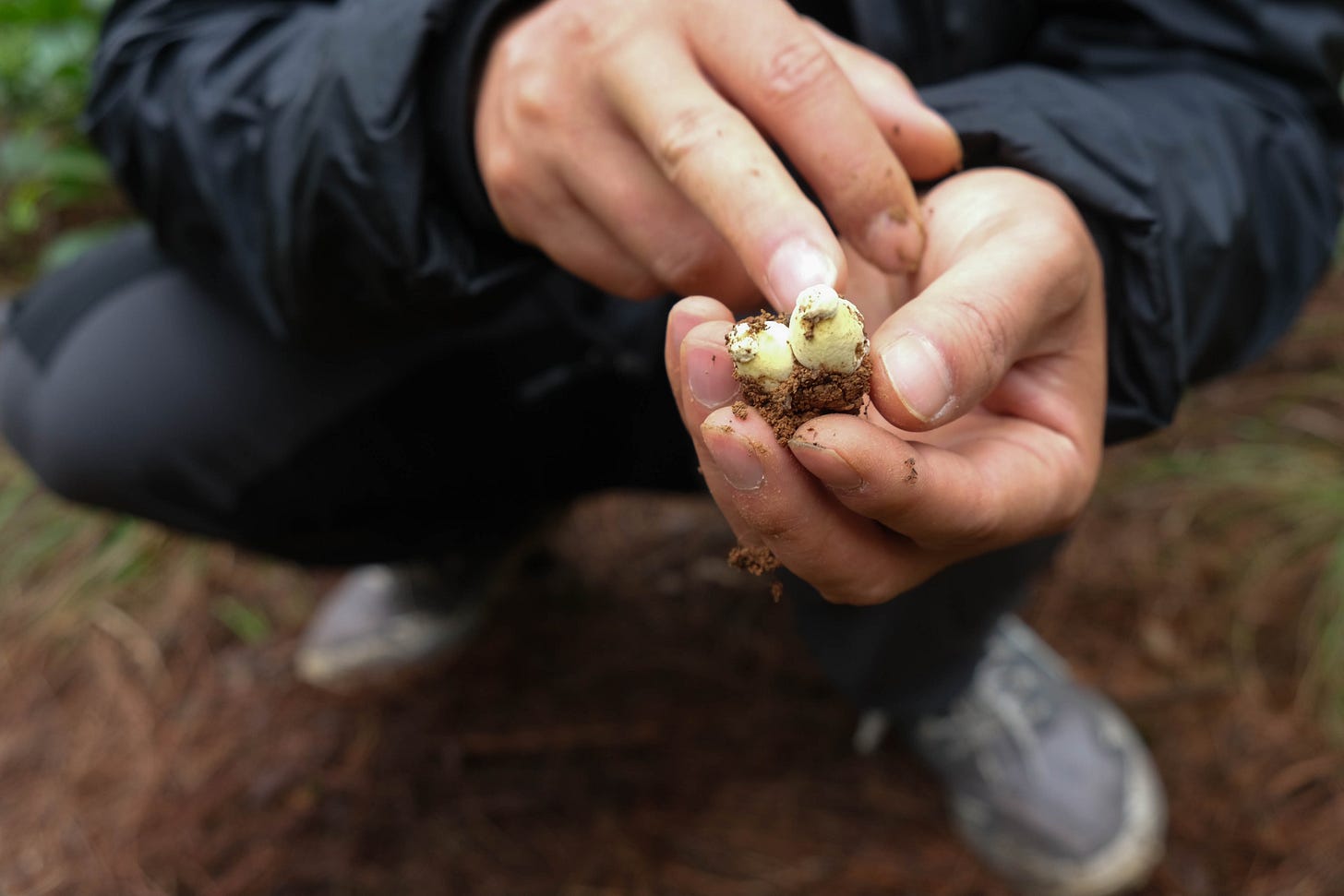
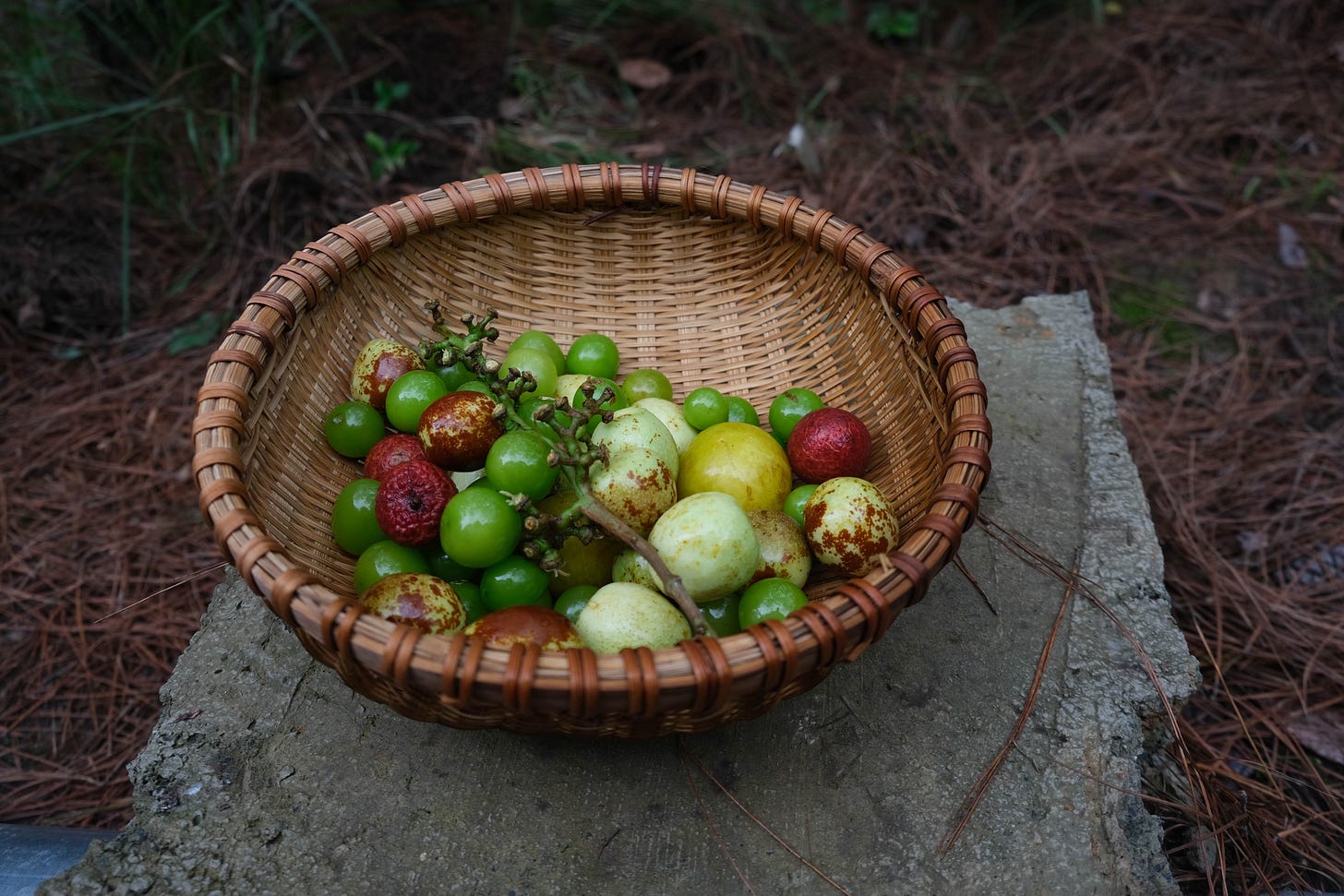

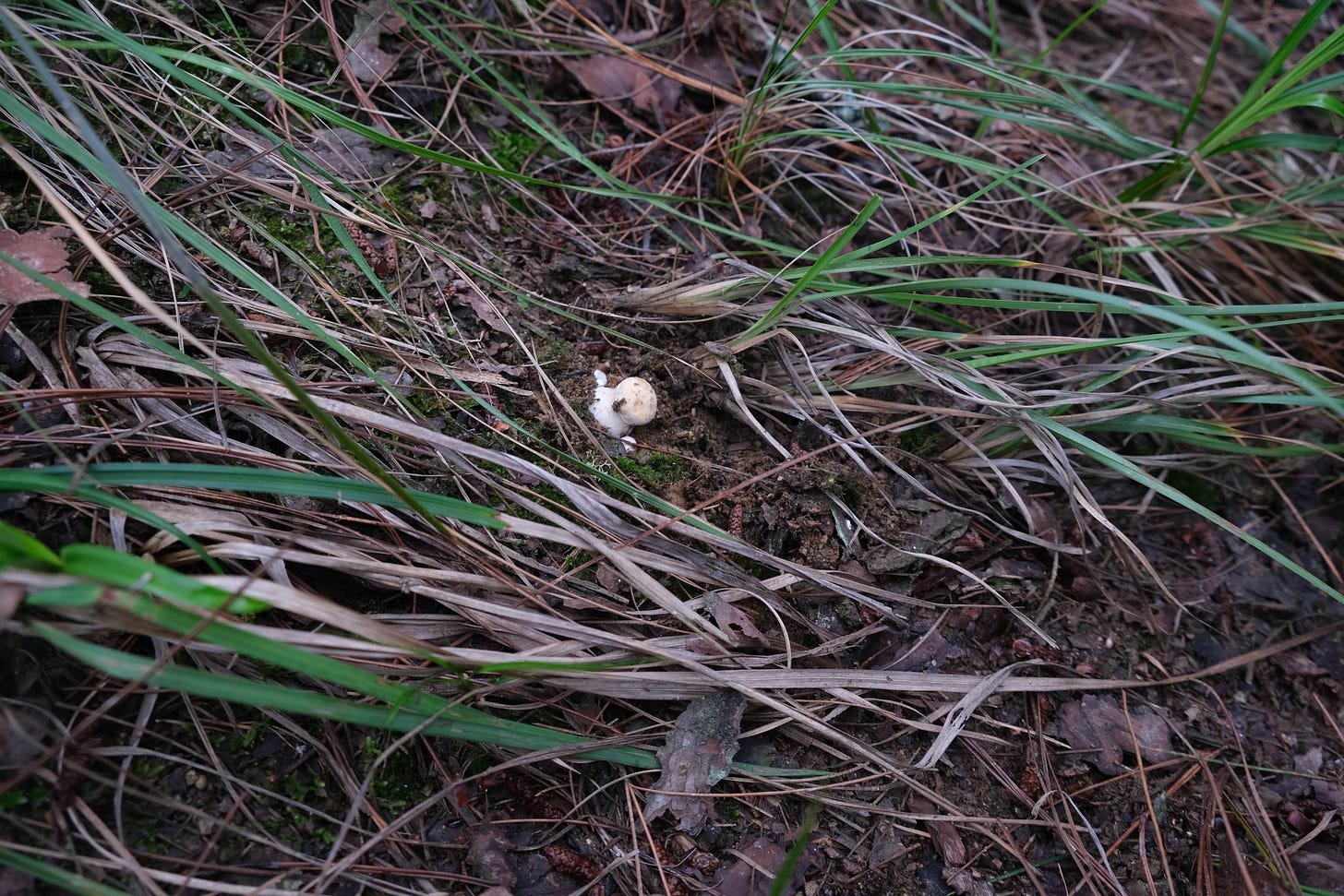

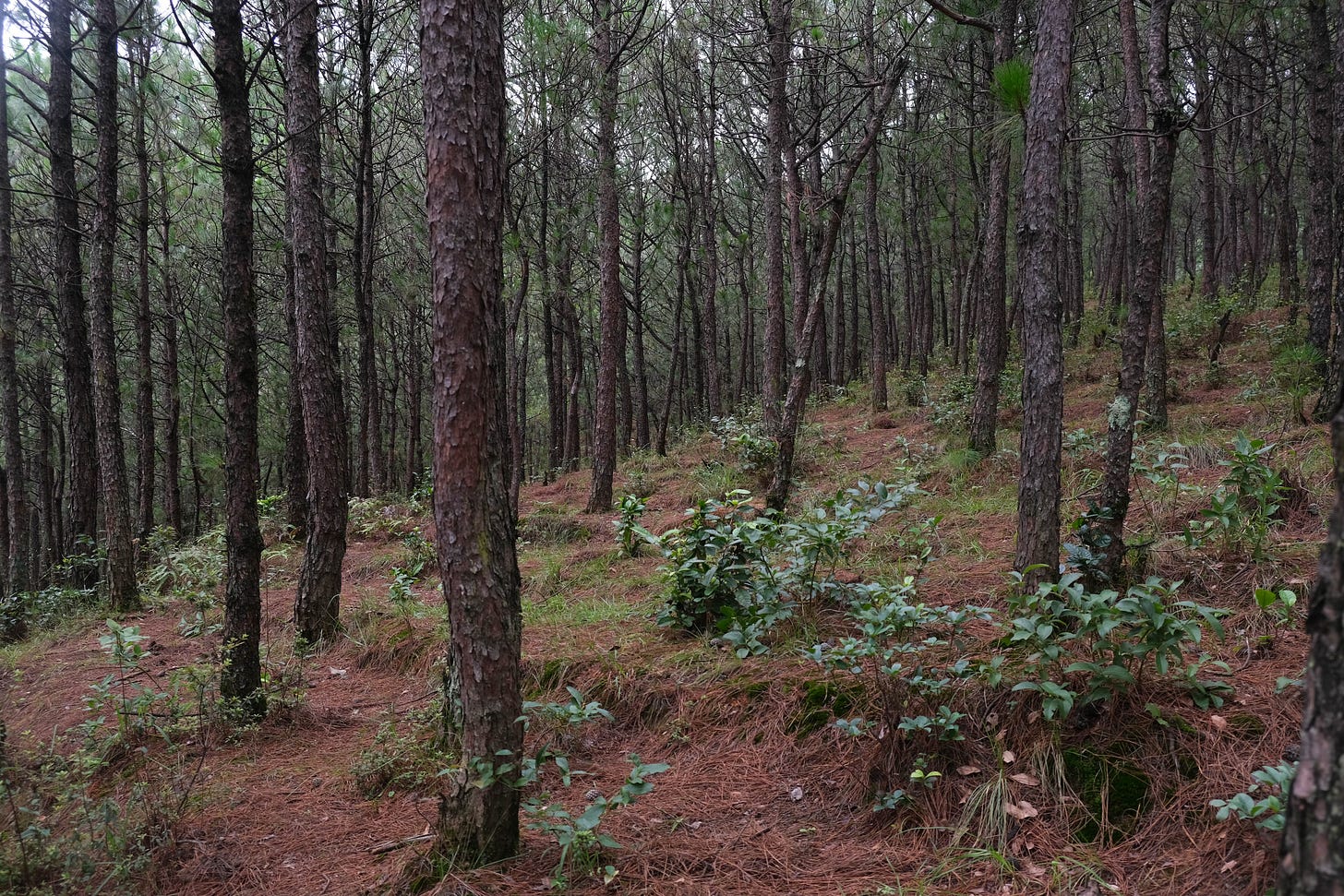

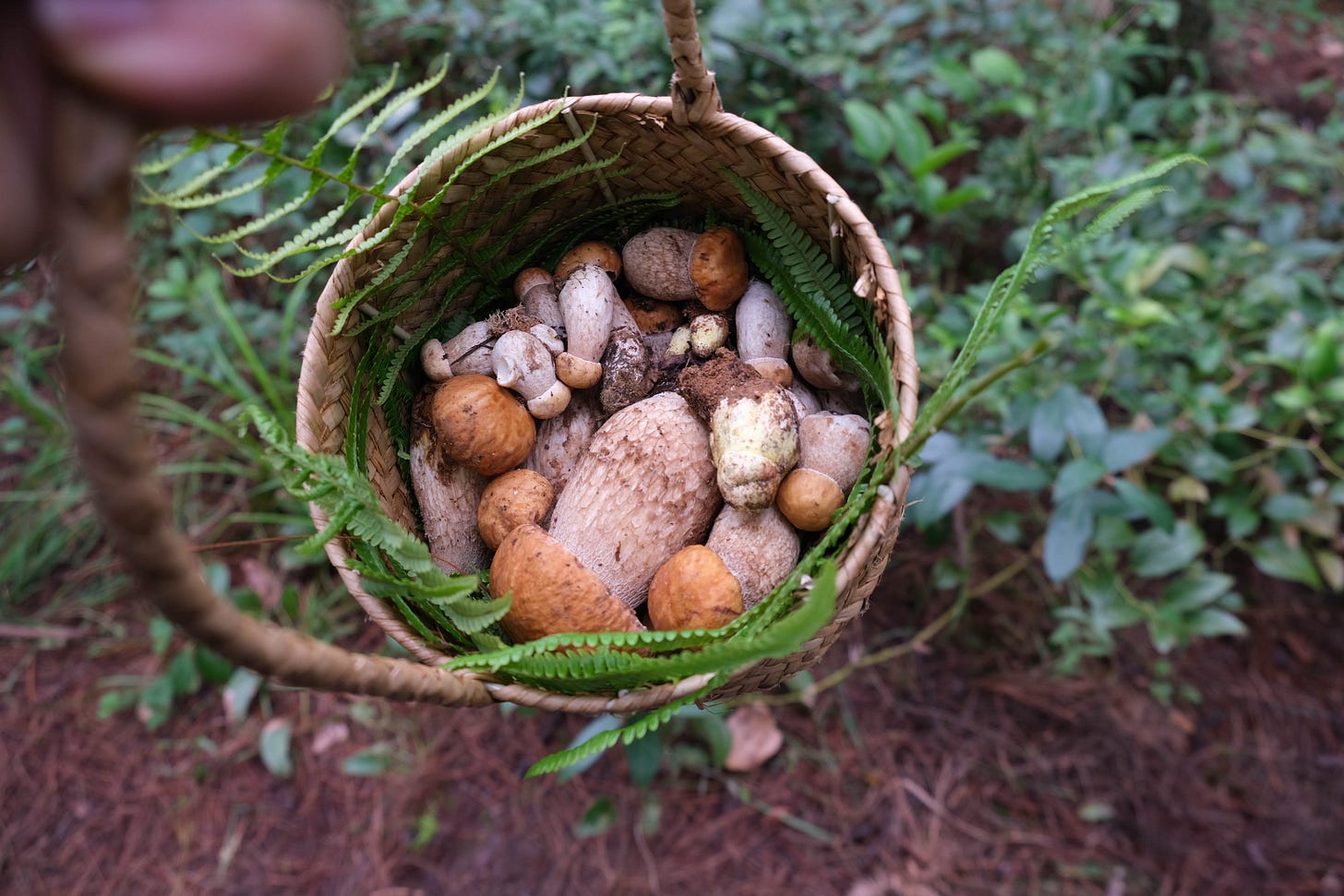

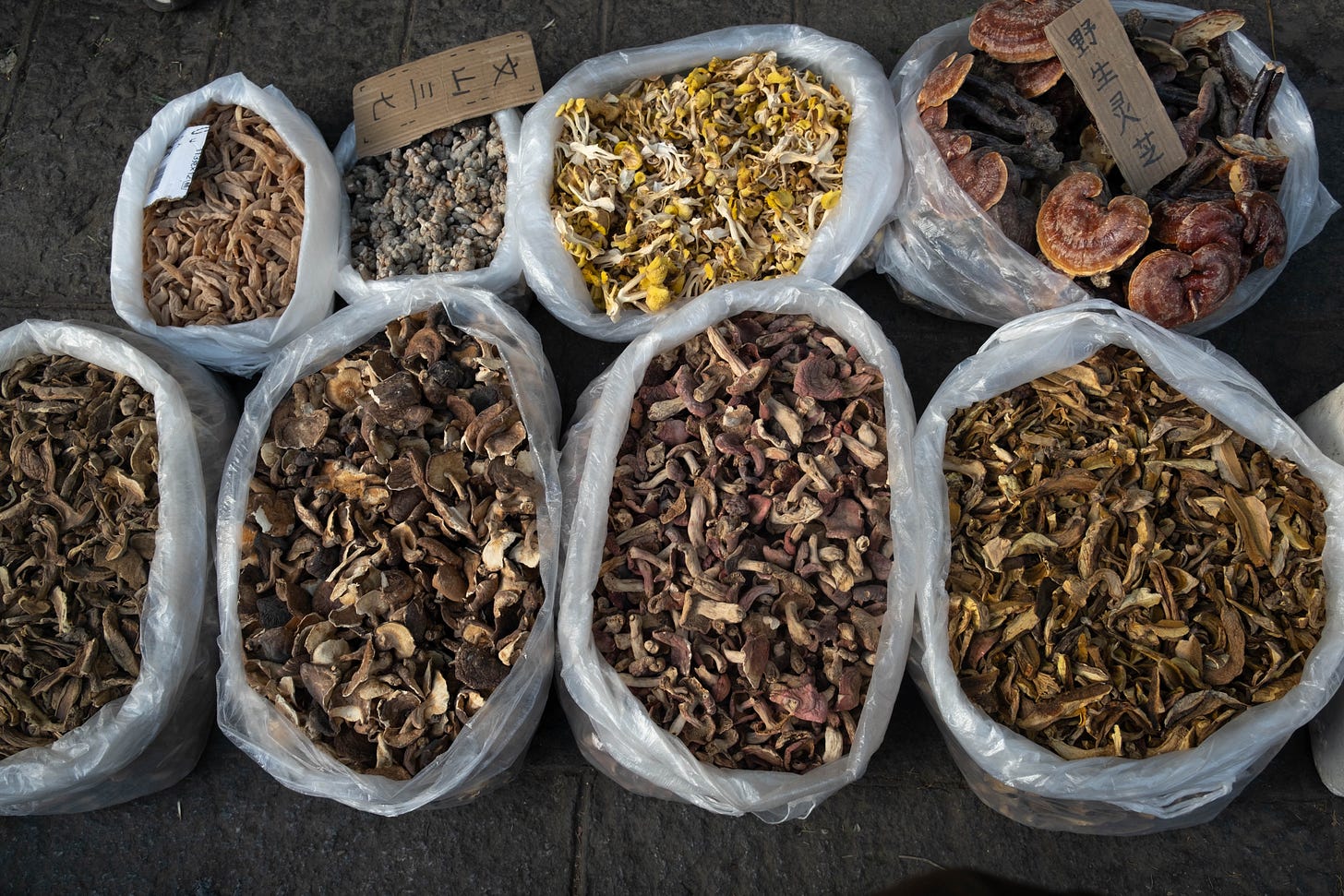




Portland, Maine, or Portland, Oregon? Both have mushrooms :)
I absolutely love your writing and photos. If you ever host a TrovaTrip, I'll be the first to sign up!